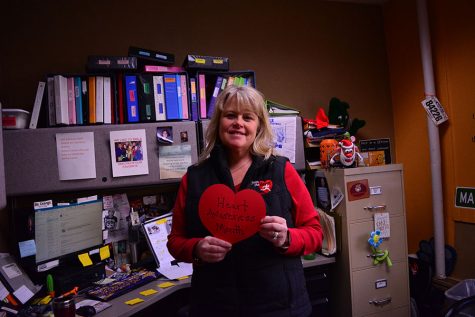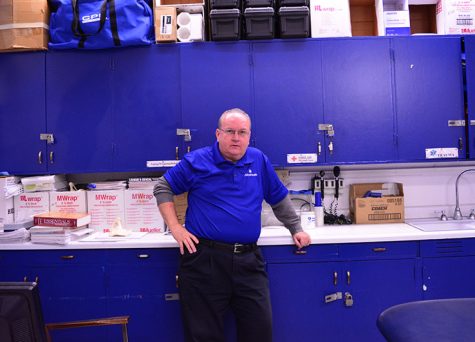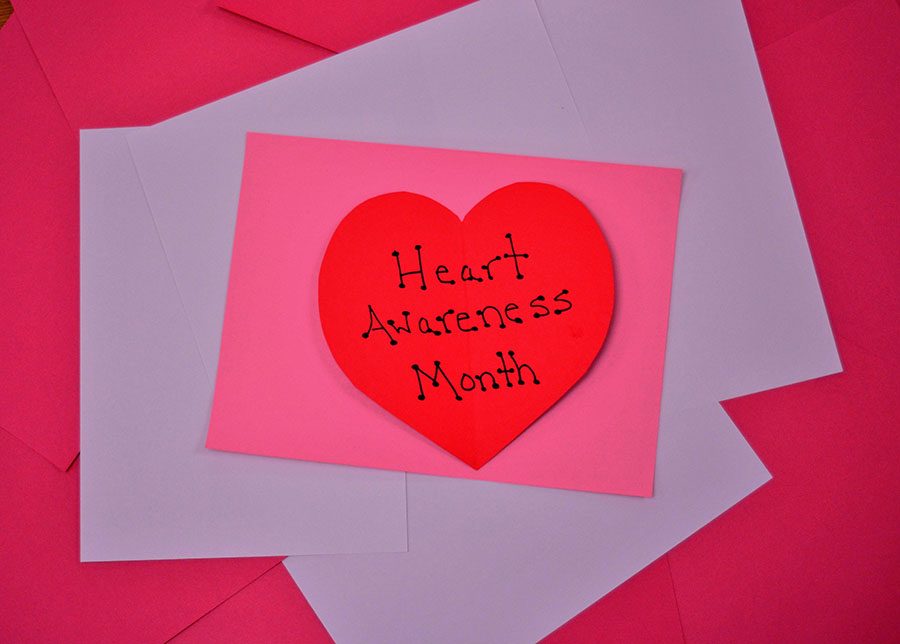February is Heart Health Awareness Month
Take it to heart
February 2, 2017
One of the most difficult things one has to endure is losing a loved one. Nothing can quite compare to that hollow feeling. It can almost feel as if the individual loses a part of themselves along with their loved one. Naturally, everyone wants to keep themselves – and those close to them – in a physical state where they can live a long, healthy life. According to Medical News Today, “Heart disease is the cause for one in four deaths in the United States every year,” causing it to be the leading cause of death for both men and women. Thus, Heart Awareness Month is one that hits home for many. Incredible efforts are made every February to boost awareness of heart conditions nationwide in an attempt to encourage healthy lifestyle changes that will prevent that statistic from rising.
One of these efforts is “Wear Red Day,” which will be held on Feb. 3 of this year. Wear Red Day is somewhat self-explanatory, it is encouraged to wear red clothing that Friday to support the effort to make more people aware of how large of a threat heart conditions currently pose to women. Another event that almost all students remember from elementary school; the Jump Rope for Heart national fundraising program. This jump-rope event helps young students not only become aware about the disease, but also do something about. These events are great for reminding communities that heart disease is a reality that could reach anyone.
Counselor Margo McKay

At the heart of the issue is OHS staff, Ms. Margo McKay and Mr. Terry Carlyle have both recently had a personal experience with heart complications.
In October of last year, McKay, one of OHS’s student counselors, noticed some irregular heart rhythms that was beginning to take a toll on her and had it professionally examined. Soon after, she found out that the impulses in her heart were not functioning properly and underwent a heart ablation surgery to burn off four “dead areas” of her heart where the damage was found. Since her heart had to be beating normally so the irregularity was visible, she needed to be awake the entirety of the surgery. Despite sounding terrifying, she pulled through and while she still meets with her cardiologist on a regular basis, she has made a very successful recovery, allowing OHS to take a breath of relief. McKay said, “With heart health, you have to be aware of everything happening in your body and if it doesn’t feel right or you are concerned, get it checked. Too many people don’t listen to their bodies. You only get one, treat it right.”
Athletic Trainer Terry Carlyle

Additionally, OHS’s athletic trainer and American Heart Association instructor, Terry Carlyle, widely known as “TC,” also had an ablation surgery performed less than a year ago due to supraventricular tachycardia, or SVT. This condition affects the electrical circuitry of the heart and caused Carlyle’s heart rate to suddenly spike up to 225 bpm, far higher than is healthy for his age range. Deciding to take a trip to the emergency room, he was told he would need a heart ablation surgery. The surgery was almost parallel to McKay’s, however TC was kept overnight at the hospital simply as a precaution.
What differed between Mckay’s and TC’s experiences what that McKay was already aware of her heart issues. Carlyle, however, had no family connections with heart problems or any idea that he himself had a condition. Carlyle said, “This isn’t something that just says, you know, congenital. I’ll be honest with you, I didn’t even know I had the thing. Didn’t even realize it until about six or seven years ago.” While genetics can have a heavy influence on heart conditions, students and adults want to always stay alert to their body’s signs, regardless of whether their family history is free of heart disease or not.
While heart conditions are not prevalent in most teenage lives, this does not mean that they are nonexistent. In OHS, there are 14 students battling a heart condition, two with implantable cardioverter defibrillators and one with a pacemaker, both used to treat irregular heartbeats with electrical pulses. Unfortunately, in the past 15 years, OHS lost two former students to undiagnosed heart condition. The most recent being Melani Omangi who passed in 2011. It is vital that teenagers are attentive to their bodies and are sure to talk with their doctor if they begin to notice anything unusual.
It is vital to remember that one’s childhood has a large impact on whether or not they will develop these diseases later on in life. Additionally, if students have a friend who is battling a heart condition, the best way they can support them and lend a listening ear, get informed on his or her condition and help them to get active! Do not forget to wear red this Friday to show OHS’s support of women battling heart disease! Stay healthy, OHS!

